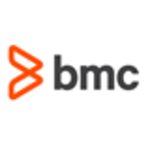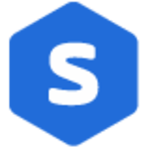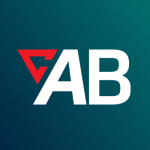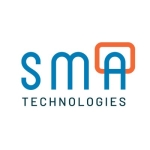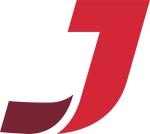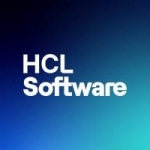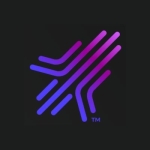What is our primary use case?
We use it primarily to run SAP jobs.
While there is other minor stuff it runs in, 98 percent is SAP. We have a number of different types of SAP systems. There are different teams who are responsible for configuring, managing, and setting up jobs. They are the ones who define the jobs and schedule them. There is an administrative team who is responsible for maintaining the system landscape and providing training for Tidal. They also provide standards, guidance, guidelines, and jobs.
We use the solution for cross-platform, cross-application workloads within SAP. Therefore, within SAP, we might run a job on one system, but wait for the job on other systems to finish first. That is our interdependency between SAP systems. However, we don't do things like run something on SAP, then go do something on a non-SAP system. We may have a bit of that, but that's not a big part of what we do. It's mostly within SAP systems or within an SAP system.
How has it helped my organization?
As far as investigating what ran and when, it is fine for the most part. You can investigate on the GUI and take a look at different things.
We've been using it for 15 years so we clearly like the product. We wouldn't be able to do many of the complex scheduling that we do today without it. For us, it is a mission-critical app. Because if it doesn't work or has a problem, then SAP doesn't function. It is that critical. So, it's an essential tool for us to manage and run SAP jobs. We depend on Tidal. Without it, we wouldn't be able to function.
A lot of stuff is automated. You don't need people running things on their own. They can schedule and run it, then not having to worry about it. They can even get alerts if there is a problem. People are just coming into the mix only if there is a problem. They get alerted to see what happened. From the automated aspect of it, you can run jobs based on a schedule, events, or whatever reduces manual intervention.
It just makes our life that much easier because all we have to do is define complex jobs, then they are pretty much on their own. We only intervene if there is a problem. Otherwise, people don't even know it is there unless there is a problem.
We run a very large number of jobs per day. At the end of month, in particular, we can easily build jobs and dependencies, expanding on what we do. It's not so much a factor of what Tidal can do, it's more a factor of what SAP can do. You can easily expand what you do with Tidal, but then you need to be sure that you can do it right in SAP. E.g., what happens after we started seeing SAP to do it? From a Tidal perspective, it is pretty easy now because we have had it for so long and have so much experience with it. It has helped quite a bit in terms of increasing capacity.
We are constantly adding jobs, though not a ton. Sometimes, we take some away, but that's rare. It's more that we add jobs. It simplifies the process of developing an application if I have Tidal because I can around things and automate things easily with Tidal. The solution is very important to us because it does a lot for us 24/7/365.
What is most valuable?
We use quite a few of the features:
- Calendaring
- Complex dependencies
- Intra-system and inter-system dependencies, respectively, within a system and within systems.
There are a whole host of features that allow us to fairly complex scheduling which wouldn't be possible otherwise.
What needs improvement?
Tidal enables admins and users to see the information relevant to them for the most part. It depends on what you are looking at. One of the weaknesses of the product is, when something happens, it's difficult to find out the root cause. There are a lot of logs you can take a look at in Tidal. Sometimes, they are useful, but other times, they're not. That is mostly relegated to the administrative team. Users for the most part don't see that and don't know anything about that. They just know they have a problem, then it's up to the administrative team to see what happened and figure out the problem.
When you need to drill further down to the lower level, that's when it becomes a bit more difficult. At the lower levels, it tends to be clearer. When you get into the guts of the app (the technical level), it is sometimes difficult to find out the root cause.
Tidal comes with two front-ends (GUIs): their Java client and web client. The Java client is a very lightweight client which you install on your desktop and terminal server. The web client just runs on the browser. They are slightly different, and what we are finding is sometimes there are discrepancies and inconsistencies between the two. One function may work in the Java client but may not work in the web client. That is because they have two sets of code with different front-ends, so they are inconsistent. I have asked if they can just use one of them. We prefer the web client because it doesn't require any installs on your desktop. However, we also like the Java client because the usability and look and feel are better on the Java client than the web client.
We have been using this solution for a number of years, using both front-ends. Sometimes, we see it as an advantage if there's a problem with the web client to go use the Java client. So, you have two ways of getting in. Although it's a pain sometimes, because you when you have an issue you need to check both and they may behave differently. On the other hand, when you have a problem, there is a different way to get in and you are glad that you have two ways to get into it rather than just one.
For how long have I used the solution?
What do I think about the stability of the solution?
The stability has been good. We have had the occasional issue here and there, but overall, it has been fine. Obviously, it hasn't been flawless. For the most part, it's been a pretty stable environment.
There is an administrative team at the app layer maintaining it. There is a senior administrator for it, and two other people who cover for the senior administrator, if necessary. At the Unix and database level, there is just one person maintaining it.
What do I think about the scalability of the solution?
You can scale. Today, you can easily scale Client Manager, which controls access to the web client. I sometimes complain about this to Tidal. For example, you can add one or two to the HA, which has a master backup. However, the only way you can scale there is vertically. So, you can make the system bigger. But with the Client Manager, you can scale horizontally as much as you like depending on the volume of people that you have, though I usually find that for us one Client Manager works just fine. The reason we have it down to just one Client Manager is because they use the Java clients, so there are different ways of getting to the system. It would be a good idea to have a second Client Manager in place so you have HA if the Client Manager goes down, then you could just go to the other one.
We haven't really had an enormous increase of jobs that has caused us to scale drastically, short of increasing memory. The CPU has not been an issue at all.
We did expand it to non-SAP, but it's not huge yet. It is being expanded to things like running Windows and Unix jobs. There are a good number of jobs that it runs from a volume perspective, but not as much as SAP.
Most people use the web client. There are 40 to 50 active users in the system. What we call super users use the Java client, so there are five to 10 people now using the Java client with the rest of the people using the web client.
We have three different types of users:
- We have the administrative team. Those are the people who maintain the system, do the training, and set up different components of the application layer, such as user groups or server groups. This is more on the technical side.
- The super users usually are the most knowledgeable and capable of using some of the more complex features of the product.
- The regular users are the people who set up regular, simple, straightforward jobs with some dependencies. They maybe set up some calendars, but nothing overly complicated.
How are customer service and technical support?
The technical support hasn't been perfect. Sometimes, it takes a bit of time to come to the root cause of an issue. They are pretty responsive though.
They have been pretty responsive of late since the company changed. You see the difference compared to Cisco. In general, they have been doing a much better job, especially communicating with customers.
Which solution did I use previously and why did I switch?
We were using SAP native schedule, which was fairly primitive.
How was the initial setup?
We are running it in version 6.2 and thinking of upgrading to version 6.5. We just recently installed version 6.5 in the sandbox to "kick the tires". We have a very capable technical team who did it fairly quick, but they had some problems. There were some minor problem which required some help from Tidal. However, we just recently installed SP3 and that was smooth. It had no problems.
The deployment took us a bit of time because we had an issue. It took like two weeks. However, if we exclude the issue, it probably took a day or two at most. It depends though on what you are installing, if you are installing in production, and if you are installing it in a quality system, where architecturally the landscape is different. For our purposes, SP3 was done in less than a day.
This was to "kick the tires", so it was not a real implementation as the production system has multiple systems and components. It will be more complex. This was just a single server containing all components of the tool, so it was easier from that perspective. It didn't take that long. Production will be different.
What about the implementation team?
It is not like anyone can do the installation. It has to be a fairly technical, experienced person. The 6.5 version upgrade to the sandbox went well.
The fact that we were able to install it on our own, albeit with a minor problem here and there at first, speaks to the quality of the software. It has definitely improved from the days when it was owned by Cisco.
One person did the deployment.
What was our ROI?
The ROI is pretty straightforward. It's a mission-critical app, and if we had to go back and do things the way we used to, it would be impossible.
It would be undoable because now we would build a whole system that depends on functionality that is in Tidal. For example, to do something like calendars in SAP, they will be nowhere near as sophisticated or high quality.
Could you do intrasystems dependencies? You could. However, there would be quite a bit of work to make that happen. It would be too complex. While here it is two clicks, and you're done.
The alternative would be to go to a different product. But how? Migrating to a new product would be expensive, consuming, and complex. I just don't see that happening.
What's my experience with pricing, setup cost, and licensing?
Our annual maintenance cost is competitive for what we have and what they do.
We haven't bought anything new in terms of adapters or new agents. We did a purchase a few years ago. So, for now, we are good. It's possible that, if things change, we might buy some other stuff, e.g., a ServiceNow adapter.
I have never had a problem with the solution’s licensing model in terms of its flexibility and its transparency regarding costs. You could debate whether it's expensive. It should be that much or less, but it's pretty clear regarding what you get and what you pay.
It has been a bit of time since we bought something new. For the most part, the company is pretty upfront, straightforward, and transparent in my dealings with them. I don't have any issues. As far as licensing and new components, we haven't had to do that in a while.
There are project, system, and server costs. Some of the things that they are doing is introducing new products. They are introducing what they call their Repository, which is a way for you to move a job. That doesn't cost anything to us, because it is reusing a tool called Transporter. The repository is the successor to Transporter, so we already own it and are sort of grandfathered in. But that new product requires a server and database, so now we have to go out and get a server and database. So, there is a cost there.
The landscape requires a number of systems for which there are costs. You don't have to do that, as you can just live with it on one system. It all depends on how you want to design the architecture. The landscape, or the architecture, depending on what you do, and if you want to do it correctly, will need a master and backup. You also need a Client Manager. You will need those three systems along with the fourth system, the heartbeat, which is the monitor between the master and backup.
There are costs, from a licensing perspective. It has been okay. We haven't had to add anything in the last three years or so.
Lately, there are costs of maintaining, managing, hardware costs, etc. That comes with the territory. It comes with implementing a tool for managing jobs and SAP RADIUS. Tidal is cheap, not really that expensive, between the licensing, hardware, etc. We certainly have a lot more expensive products.
Which other solutions did I evaluate?
Going back 15 years when we bought the product, we looked into AutoSys and a BMC product. We looked at three or four solutions back then. We liked Tidal because of the user interface. It had the best user interface. 15 years ago, AutoSys only had command line.
There are new competitors now: Automic and Redwood.
We haven't had a reason to even consider anything else. The company has used the product for a long time. As far as I know, we have no plans to get rid of the product.
What other advice do I have?
We originally liked the product for the user interface, because of it was easy to use and the features, such as calendaring, dependencies, etc. I don't think the solution is difficult to implement and learn. Though, it depends. It certainly has some very advanced features which require more than cursory knowledge of other products. It takes time for that, and there is always a learning curve for whatever product you do. In general, it is a fairly easy product to install and use, if you are flexible as far as how you want to deploy it.
It's very straightforward to understand and install, but you need to have the right people who have the right knowledgeable and can do this type of stuff. E.g., you need strong technical people. Though, we certainly have dealt with more complex products, deployments, and systems.
The tool is complex because it can do many complex things. One of our requirements is before anyone gets on it that they get two hours of training sessions. This is just to give them a minimum of the basics. Almost right away, people learn the basic stuff: create a job, monitor a job, etc. The more complex tasks takes more time, but are not used by everybody. Most people just do the basic stuff, so learning doesn't take that long. The majority of people learn the tool fairly quickly.
It is a mission-critical app. We depend on it to run our SAP trials. Without it, I don't know how we would do them. It's just that critical. We know if Tidal has a problem, because everybody knows. It's that critical to us.
I would rate the product from a seven to eight (out of 10). We have been using the product for a long time. We like it. We plan to upgrade soon, hopefully this year or next year. The users are very familiar with the product. It has become such a critical tool for us that we depend on it. We have built a relationship with the company now. I believe that the product is in good hands. They want to do right by the customer and listen to them. They are doing a lot of good things.
Which deployment model are you using for this solution?
On-premises
Disclosure: My company does not have a business relationship with this vendor other than being a customer.


